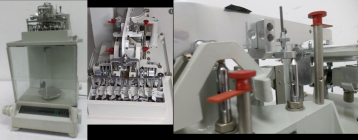After reading the posts on this thread, and several other like threads on this site, I had a good look at my recently purchased but little used scale.
I dressed the knives with a diamond hone, blew off the agate beds, and dusted them with moly, checked clearance to the copper damper, set it back up and.......it was still sticking.
Close examination revealed that the aluminum plate with the fixed reference line that the pointer points to was bent inward, probably in an effort to eliminate parallax, and it just touched against the pointer on the beam.
I adjusted it out a bit and presto....works beautifully.
So that was the issue, pointer dragging on the aluminum plate when the beam came up to level as I charged the pan. It'd stick, I would overfill the pan by a few kernels, and then it would break loose and travel up after a few seconds.
I dressed the knives with a diamond hone, blew off the agate beds, and dusted them with moly, checked clearance to the copper damper, set it back up and.......it was still sticking.
Close examination revealed that the aluminum plate with the fixed reference line that the pointer points to was bent inward, probably in an effort to eliminate parallax, and it just touched against the pointer on the beam.
I adjusted it out a bit and presto....works beautifully.
So that was the issue, pointer dragging on the aluminum plate when the beam came up to level as I charged the pan. It'd stick, I would overfill the pan by a few kernels, and then it would break loose and travel up after a few seconds.











